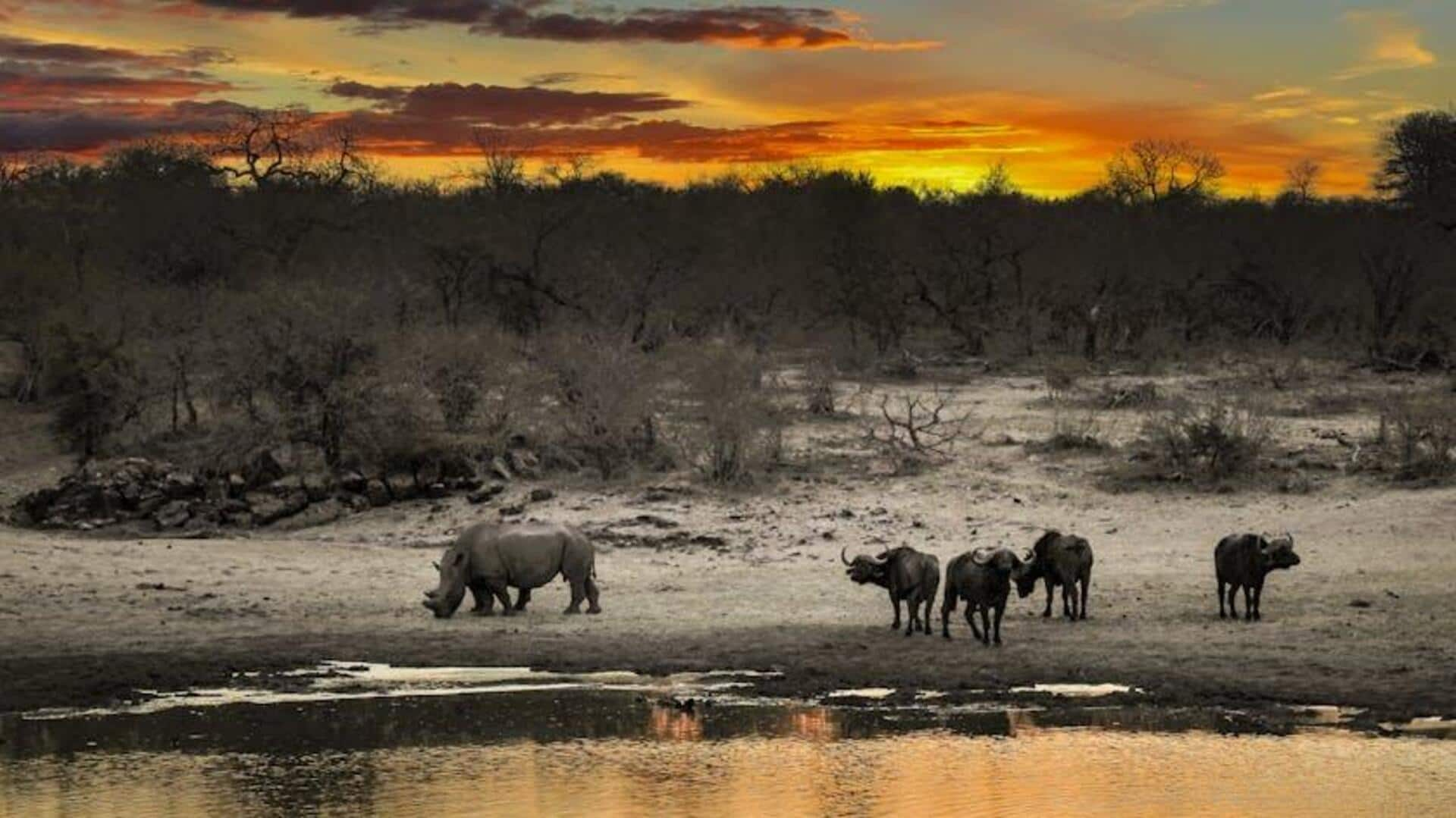
5 wildlife sanctuaries promoting sustainable tourism
What's the story
Africa is home to some of the most diverse and breathtaking wildlife sanctuaries, making it a top pick for eco-conscious travelers. These sanctuaries offer an opportunity to witness wildlife in their natural habitat, while also promoting conservation efforts. From sprawling savannahs to dense forests, each one offers an experience like no other, while also supporting sustainable tourism and environmental preservation. Here's a list of some.
Serengeti
Serengeti National Park: A wildlife haven
Serengeti National Park in Tanzania is famous for hosting the annual migration of over one million wildebeest and hundreds of thousands of zebras. This UNESCO World Heritage Site covers roughly 30,000 square kilometers and presents an unmatched chance to witness the Big Five—lions, leopards, rhinoceroses, elephants, and Cape buffaloes—in their natural habitat. The park's dedication to conservation allows visitors to enjoy majestic creatures while promoting sustainable tourism.
Kruger
Kruger National Park: South Africa's gem
One of Africa's largest game reserves, Kruger National Park spans nearly 20,000 square kilometers in northeastern South Africa. Renowned for hosting the highest density of wild animals including all Big Five game species, Kruger offers eco-friendly accommodation and guided tours to focus on conservation education. Its extensive road networks offer self-drive safaris or guided tours with experienced rangers who detail the region's biodiversity.
Maasai Mara
Maasai Mara: A cultural experience
Located in southwestern Kenya, Maasai Mara National Reserve is known for its incredible lion population and the Great Migration—an awe-inspiring sight of millions of wildebeest crossing from Tanzania's Serengeti into Kenya's Maasai Mara between July and October. The reserve also provides cultural experiences with the native Maasai community, who are key to maintaining this ecosystem through ancient practices of land management.
Bwindi Forest
Bwindi Impenetrable Forest: Gorilla trekking adventure
Uganda's Bwindi Impenetrable Forest is home to nearly half of the world's mountain gorilla population. The UNESCO World Heritage Site offers a once-in-a-lifetime opportunity for gorilla trekking, where visitors can witness these gentle giants from up close under strict guidelines to ensure that neither gorillas nor humans are at risk of disease transmission or disturbance of their habitat.
Etosha
Etosha National Park: Namibia's unique landscape
Etosha National Park spans over 22,000 square kilometers in Namibia and it is home to sprawling salt pans and stunning ecosystems. The grasslands host antelope and predators such as cheetahs near waterholes. During dry months, these locations entice hundreds of animals, resulting in unforgettable wildlife scenes. The park's management reduces environmental impact, allowing visitors to have true experiences in an otherworldly landscape.